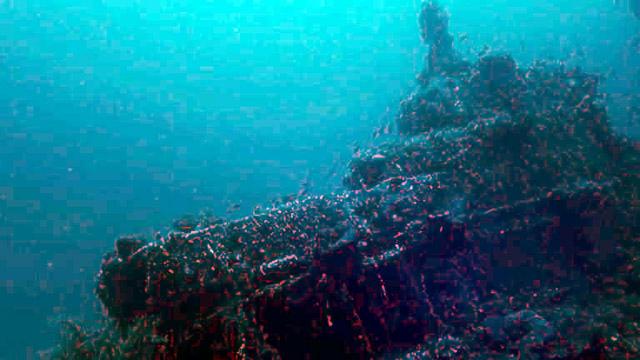- International News
- Sun-2020-10-11 | 07:38 pm

Nayrouz News Agency :
Tunisian divers have discovered a French submarine wreck from World War I, the Ariane, which was sunk by a German submarine in 1917.
The craft was spotted off Cap Bon by the managers of a diving club in the country's northeast as they were exploring new sites to explore with their students.
"We knew they were wrecks but we didn't know what we were going to find," said the diving director of the Ras Adar club, Selim Baccar.
"On the first dive, we came across the submarine."
The almost intact wreck is covered in algae, its hatches and periscope now home to fish and crustaceans.
After questioning several experts, the club deduced it could only be the Ariane, which was based in Bizerte, at the time a French port in northern Tunisia.
"This is the third submarine found in Tunisia, and the only one from the World War I. It's exciting, as if a history book has come to life," said Baccar.
"We came across military reports detailing minute by minute everything that was happening in the Mediterranean. And when we go back to that situation, I say to myself that I'm glad I didn't experience a war."
During the World War I, German submarines wreaked havoc off the Tunisian coast, where they were initially deployed to cut the Allies off from their reinforcements of men and provisions from the French colonies, said historian Ali Ait Mihoub, from Manouba university.
About 80,000 Tunisians were mobilised to fight or work in French factories during WWI, he told AFP.
The Ariane was torpedoed by a German U-Boat while still on the surface, and only eight of the 29 crew could be saved, according AGASM, a French association of former submarine operators.
"It is not common to find wrecks of submarines, especially from the First World War, because we don't know exactly where they sank," said Admiral Dominique Salles, president of the group.
Submarines, which played a decisive role for the first time during WWI, then provided very basic comfort.
The French submarines, which originally had neither bunks nor toilets, were submersibles that remained mostly on the surface, says the Encyclopedia of French Submarines.
They would only dive for a few hours at a time, for attacks, during which men and food were piled up in a suffocating engine room













